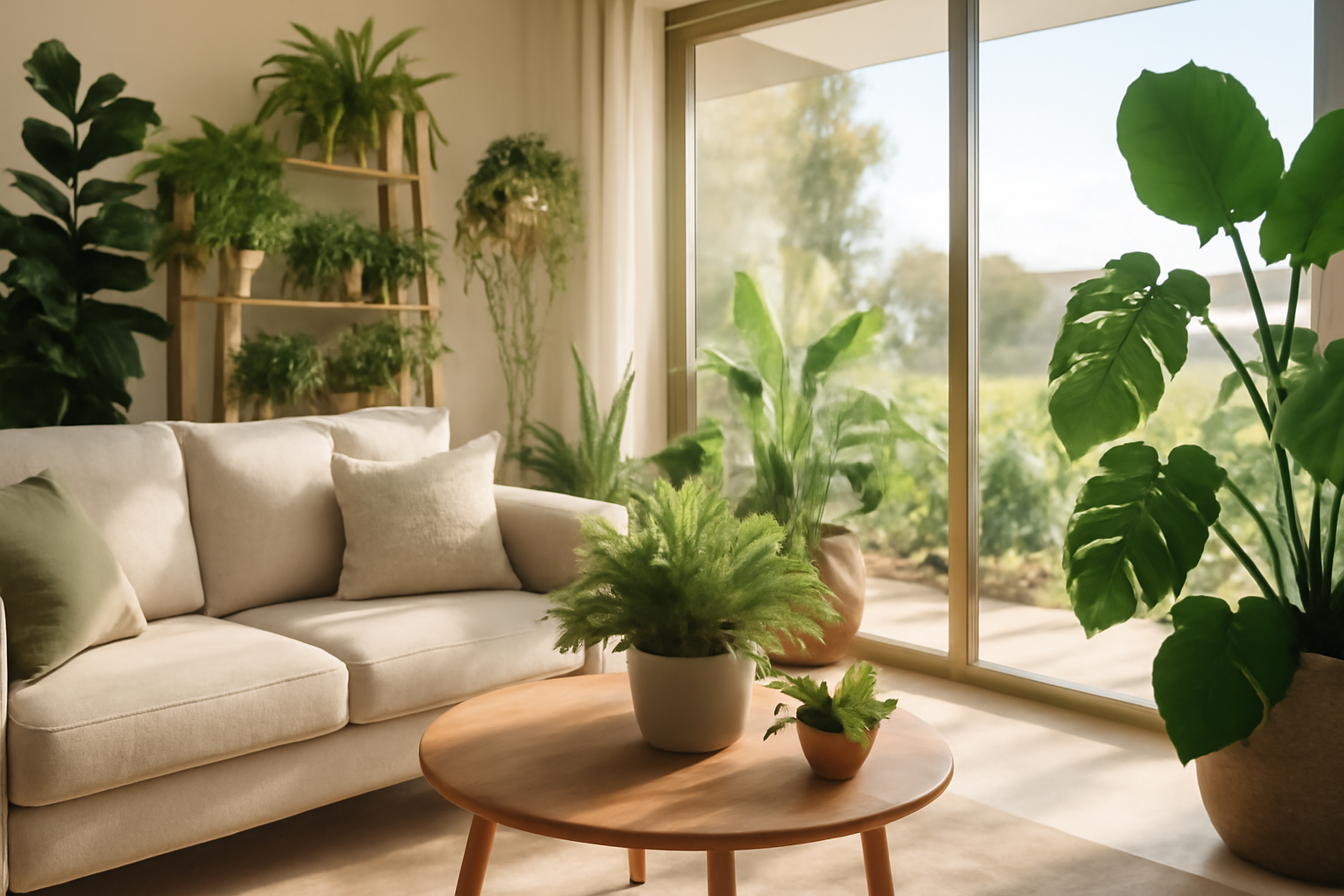There's a deep sense of peace in being outside in nature—a sense of balance and renewal. This deep connection is what is at the core of biophilic design, a philosophy based on our very fundamental human desire to connect with the world around us. So much more than a momentary trend, it's a real sea change in the way we think about our homes. It's about planning houses intentionally that are more than mere shelters, but havens that support our well-being by bringing the world inside.
More Than a Feeling: The Proven Benefits of Biophilic Design
The gut feeling of a brightened room or natural wood grain is supported by an impressive quantity of scientific research. Bringing in natural elements to live with has quantifiable benefits on our health, well-being, and even our wallets.
- Improves Health and Recovery: Direct exposure to nature is shown to be therapeutic. In Frontiers in Built Environment, a detailed review discovered that biophilic features in healthcare settings lead to lower levels of patient pain and stress.
Conversely, studies reinforced by Rockfon also show that longer periods of natural daylight exposure may lead to shorter recovery times within hospitals, highlighting its strong physiological effect.
- Improves Creativity and Concentration: Nature can clear the mind. A report by Crest Interiors says that workplaces that include nature experience a considerable 15% boost in creativity and happiness.
For Australians increasingly working or studying at home, this means an environment that encourages higher productivity and clearer thought.
- Provides Environmental and Cost Benefits: A biophilic house is very likely to be a more effective one. An article on ScienceDirect describes how characteristics such as living walls and green roofs offer natural insulation, cutting the amount of energy a building uses and its carbon output.
In addition, houses that harmoniously integrate such design elements are likely to be worth more, making it a financially smart long-term investment.
Design in Focus: Notable Biophilic Projects
Across Australia and around the globe, innovative architecture showcases the transformative power of biophilic design.
- One Central Park, Sydney: This iconic tower is a compelling demonstration of vertical greening. Its verdant facade, blanketed in vegetation, acts like a living skin that both shades and cools naturally, illustrating how nature can be woven into even the most concentrated urban environments.
- Royal Darwin Hospital Greening Project: This project demonstrates the effect of localised solutions. One study reported in ScienceDirect demonstrated that the introduction of more than 1,200 indigenous plants was effective in reducing ambient temperatures and enhancing comfort for patients and employees in a demanding tropical environment.
- Khoo Teck Puat Hospital, Singapore: As a world leader, this "hospital in a garden" has registered impressive results. Its design encourages natural ventilation and has yielded 60% reduced energy consumption relative to comparable facilities, demonstrating that well-thought-out design can deliver dramatic environmental and health advantages.
Practical Ways to Cultivate a Biophilic Home
You don't have to necessarily do a huge revamp to adopt this philosophy. Actual change can start with making some well-thought-out modifications to your very own house.
Maximise Natural Light and Views
Start with a reflection about the way light flows within your house. Are heavy drapes replaceable with lighter treatments? Might furniture be shifted to allow a glimpse of sky or garden?
For more extensive projects, think about the way skylights or large glass doors can eliminate the boundary between in and out.
Embrace Natural Materials and Textures
Use tactile and real materials. Wood, wool, linen, and stone create a sense of luxury and warmth that chemical and plastic cannot capture.
Ceiling or feature walls use sustainably-harvested timber systems by professionals such as Sculptform to produce a stunning, natural focal point. Such finishes ground a space, both making it serene and luxurious.
Use Greenery and Water Features
Plant use is a biophilic design staple. Plants clean the air, help combat stress, and bring rich splashes of color to any space. Begin with nicely placed house plants or a mini herb garden. A tiny water feature can also bring a gentle, soothing sound element from nature.
Bring Natural Patterns and Shapes into the Space
Nature's designs, or fractals, satisfy the human eye by nature. They are complex yet ordered forms that appear to occur everywhere from ferns to snowflakes.
You can exhibit these patterns by way of art, textiles, or designer furniture to evoke an impression of ease of balance and visual appeal.
The Future of Australian Homes
As our knowledge of how environment relates to wellbeing grows, biophilic design will cease to be something rare and exceptional and instead become the norm for contemporary living. It wonderfully synchronizes with a common aspiration for more sustainable and healthier ways of living.
This method is not about mimicking the wild, but about intentionally selecting aspects of nature and bringing them together to create homes that literally restore and uplift us. If we keep these principles in mind, we are able to create living spaces that will allow us to feel our best in the coming years.


































